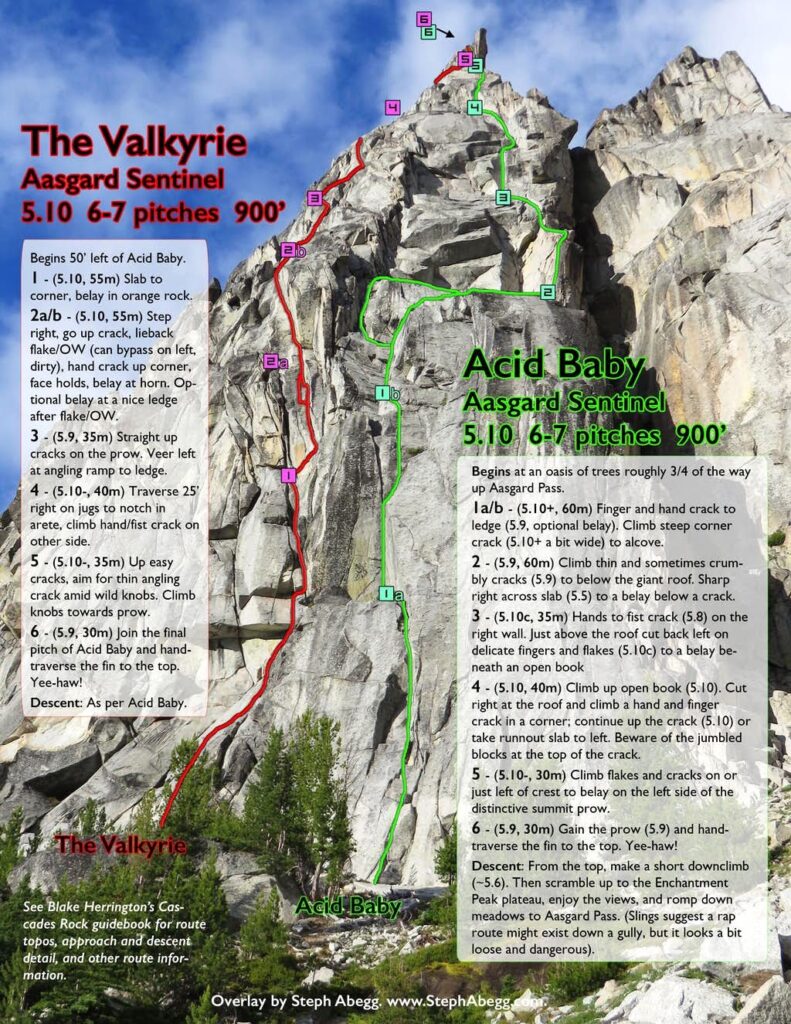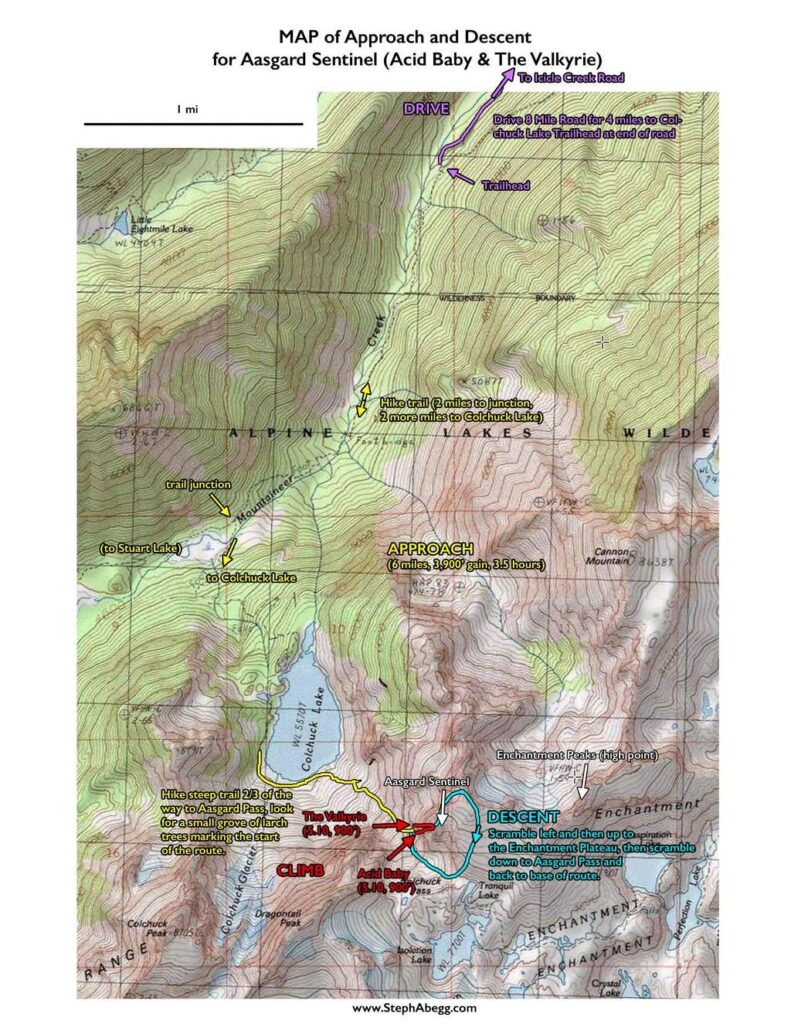In the past decade, a number of new 5.10 and 5.11 and 5.12 routes have been established in Washington's Cascades in the areas around Washington Pass and the Enchantments.
Acid Baby is one such route, established in July 2005 by Mike Layton, Dan Cappellini, and Rolf Larson on the fractured wall* flanking the northwest side of Aasgard Pass spilling down from the broad summit plateau of Enchantment Peak. (*As Blake Herrington notes in his 2016 Cascades Rock guidebook for this route, it is possible that this feature is called Aasgard Sentinel or Spineless Prow; there is some confusion as to the exact features these names were attributed to. I will use Aasgard Sentinel since that is what Blake chose to use.) The route features nearly 1000 vertical feet of pretty sustained 5.10 crack climbing. I finally got around to climbing it in June 2015 with my friend Will Surber. We had a blast. This route reopened my eyes to the fact that there are some excellent 5.10+ alpine rock climbs in the Cascades.
A note on gear: We climbed with a double rack through #4. The route features a lot of wide climbing (I think we placed a #4 on each pitch!), and having a second #4 came in handy enough that we never regretted its extra weight. Also, most pitches were around 45-50m rather than the 60m listed in some route descriptions.
Update: Will and I enjoyed
Acid Baby so much I came back the next year and climbed the nearby route
The Valkyrie (I had hoped to climb it with Will but weather+schedule didn't allowed it to happen).
The Valkyrie seemed a touch harder than
Acid Baby, perhaps because it was a bit less traveled, but like Acid Baby it had some great 5.10 climbing on it. Here is my
trip report for The Valkyrie.
The following page has an overlay and photos for our climb of
Acid Baby.


























